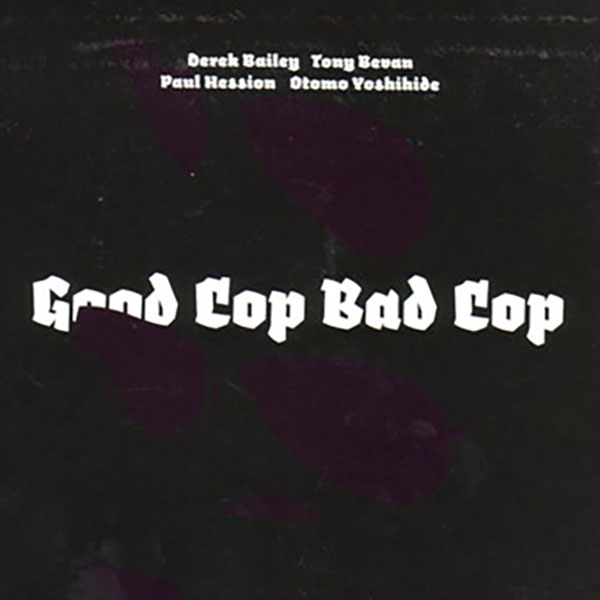
by Tim Owen
March 25, 2009
/ ALBUM
A richly textured, mutually sympathetic conversation from an all star improv line-up
Recorded in November 2003 by something of an all-star improv line-up, these tapes have been gathering dust for some reason or other, so thanks to No-Fi for putting them out. To dispense with the major negative immediately, this Liverpool gig wasn’t Derek Bailey’s finest moment. He’s never less than compelling, but the evidence on offer suggests that his best efforts on the night may have held the group back from transcending their collective potential. The four participants are fairly evenly matched. Each has developed a unique vocabulary on their instrument, and each is extensively experienced. If anything, however, they are too respectful of each other, with the result that none of the tracks - two ensemble pieces and four duets - develops into anything distinctive; the ebb and flow of the discourse is nevertheless engrossing and consistently rewarding.
The first five minutes of the first piece, No Hiding Place, is effective but tentative, with Bevan coarsening ambient textures created by Bailey and Yoshihide, giving Hession something to play against. After a brief hiatus, Bevan imposes some coruscating sax, and draws similarly caustic support from Bailey on uncharacteristically aggressive electric guitar. This passage actually sounds more like Yoshihide than Bailey, but moments later Yoshihide is clearly playing his turntables and mixing board, so I’m assuming the guitar work here is Bailey’s. The picture is complicated by Bevan’s occasional phuttering in imitation of turntable static; unless it is Yoshihide of course. You can get a lot out of this music just attempting to divine what’s going on. Electronics, guitar and metallic scraping (Hession’s cymbals?) combine to create a ?carpet of static’ across which Bevan’s sax flutters. As the piece morphs into the first duet, for Bevan and Yoshihide, it becomes increasingly ?dry’, with Bevan breathlessly ?vocal’ and urgent.
The next track, by Bailey and Hession is, at over 16 minutes, the longest of the duets.
Bailey’s guitar has his characteristic banjo-like dryness/aridity with only judiciously applied sustain, while Hession is initially skittish, brushing across entire surface of his kit. An initial attempt to build momentum soon ebbs to silence. After a very tentative restart Bailey strikes hard and Hession responds in kind, but this attack also diminishes to dry scrabbling, until by 10:40 Bailey is picking around Hession’s skittering. Hession switches to high-pitch cymbal scrapes and Bailey tries a few open chords, but again this leads nowhere. At 12:40 the pair again hit hard and this time sustain the impetus. Initially agitated but increasingly intense, they launch into a gnarly tussle that lasts out the long final passage. The mutual responsiveness is evident at every twist and turn, but it’s an occasionally frustrating journey for the listener.
On The Bill Yoshihide, on electric guitar, replaces Bailey. This track initially continues in much the same vein as the last, though Yoshihide fully exploits his electrical connect for sustain and discord, and Hession is more dynamic as a result. At 03:45 Yoshihide’s guitar work peaks in intensity, leaving Hession briefly solo, only for Yoshihide to re-emerge with chiming notes and then a sustained high tone across which Hession plays fast, his stick work gradually focused on the drum heads. Hession takes the duet to a climax of sorts before drawing back, allowing Yoshihide’s ebbing tone to take the piece out.
Bailey returns for the title duet, in partnership now with Bevan, who at first matches Bailey’s dry, agitated style but then becomes more assertive, even attempting to impose a melodic motif. Bailey plays along but remains impressionistic, prompting Bevan to probe other melodic ideas. Eventually Bevan encourages Bailey to a degree of extroversion, but by 07:00 both men are back to probing a virtual silence. Bailey strikes dry chords and Bevan likewise sounds parched; he attempts to get things going again with some quick-fire harrumphing, but Bailey’s austerity wins out again.
The recording closes with a long quartet piece, Flying Squad, which again picks up the thread of the last piece. At 07:00 Yoshihide introduces a skein of dissonance (perhaps manipulating a pickup or a contact mic) which prompts Hession to up the pressure briefly, before Bailey’s more spikily restless mood reasserts itself. Yoshihide then introduces further, minimally outré electronics effects, so that at the ten-minute mark the piece is amorphous and disjointed. This situation is partially resolved by Bevan’s sax as he exploits a moment’s lull to suggest an alternative route. By 17:00 the mood is again agitated, with Bevan (I think) contributing wordless background vocals, leading to unison climax. But the group refuse to go out on a bang: at the close only Bevan’s final, thin tone remains.
The ?good cop, bad cop’ analogy is more than fitting for this music, constantly shifting as it does between individual efforts and ad-hoc partnerships. The group never really coheres, but its constituent elements exploit, and tentatively explore, many of the potential avenues for discovery. At the end of the day the unresolved tensions that remain after such a richly textured, mutually sympathetic conversation as this are infinitely preferable to the alternative, which would be an overblown pileup of musical egos; and that, in the final analysis, is as much thanks to Bailey as anyone else.
blog comments powered by Disqus